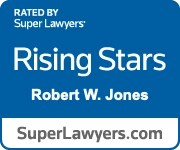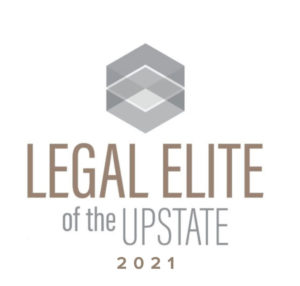Between 7 and 23% of nursing home residents develop pressure ulcers. Nursing home ulcers are common and are associated with worse health outcomes.
The experienced Greenville nursing home abuse lawyer at Bobby Jones Law explains the prevalence of pressure ulcers in care homes and what you need to know.
Pressure Ulcers in Nursing Homes—A Common Problem
A person lives in a group home because they are vulnerable. The conditions in the home and the care a person receives can contribute to bed sores developing. Along with slip and fall accidents, infection, medical error, and financial abuse, nursing home residents face the danger of developing pressure ulcers. They are a common problem for both short- and long-term care facility residents.
Statistics About Nursing Home Pressure Ulcer Prevalence
Smith, Pressure ulcers in the nursing home, Ann. Intern. Med. (1995).
- Seven to 23% of nursing home residents will experience pressure sores.
- Seventeen to 35% of patients have pressure sores at the time of admission.
- Treatment for the serious stages of pressure ulcers is long and expensive.
Sugathapala et al. ., Prevalence and incidence of pressure injuries…, Int. J. of Nursing Studies (2023).
- Approximately 11.6% of residents studied had pressure sores.
- Excluding stage one, as many as 7.2% of residents may have ulcers from pressure.
- Stage 1 and Stage 2 are the most common levels.
- Older people in nursing homes are particularly at risk.
- The heel is the most common place for pressure ulcers (34.1%), followed by the sacrum (seat) (27.2%) and foot (18.4%).
CDC, Pressure Ulcers… (2004).
- Eleven percent of nursing home residents may have pressure sores.
- One study found that 50% of all nursing home pressure ulcers were Stage 2.
- Short-term residents were more likely to have sores than long-term residents.
- One in five residents with recent weight loss developed pressure ulcers.
Chen, et al. ., Accuracy of Pressure Ulcer Events…, Med. Care (2022).
- Many pressure ulcers go unreported—82.2% reporting in Stages 2-4 for short-stay hospitalizations.
- When the pressure ulcer is a secondary diagnosis, non-reporting may be as high as 45%.
What Are Pressure Ulcers and How Do They Develop?
Pressure ulcers are where the skin has been worn or sheared away because of pressure. Force on a certain point of the body, for too long, destroys the skin, leaving internal flesh exposed.
Factors That Contribute To Pressure Ulcers in Elderly Residents
- Residents not able to reposition themselves
- Infrequent repositioning, lack of staff, or poorly trained staff as an underlying cause
- Bedding and bedding materials that contribute to shearing
- Communication challenges making a patient unable to report if they are uncomfortable
- Medical conditions making the skin more susceptible to wearing away
- Inadequate nutrition, including hydration
- Patient incontinence
- Osteoporosis
- An environment with low humidity
- Medical conditions affecting blood flow
Some of the factors that contribute to pressure ulcers are characteristics specific to the patient—their health, mobility, and preexisting conditions. Other factors are controlled by the nursing home, including appropriate medical attention and staff resources devoted to patient care.
The Role of Nursing Home Staff in Preventing Pressure Ulcers
Nursing home employees have an important legal duty in preventing pressure ulcers.
Residents of a residential care facility have the right to expect reasonable care. That includes steps taken to prevent bedsores.
Care providers must assess the needs of the patient. What one person needs might be different from someone else’s needs. With individual needs assessed, care providers must meet patient needs, which should be reassessed periodically and when circumstances change.
In addition, staff must identify developing bed sores. The sooner they are identified, the sooner treatment can begin. Care providers must be trained to recognize them.
Overall conditions in the facility should also be assessed. For example, staff members need access to bedding supplies and positioning wedges. Adequate measures should be taken to address food and water service, overall sanitation, and humidity levels. These measures can reduce patient risk overall.
Health Risks and Complications Associated with Pressure Ulcers
Pressure ulcers can cause complications. Skin tissue can die. Soft tissue, including muscles, bones, and tendons, can become stiff.
Cellulitis, which is an infection of the soft tissue of the skin, can occur.
There is a risk of infection, which can spread to the bloodstream. Bone and joint problems, including osteomyelitis and septic arthritis, can occur. Sepsis can cause septic shock.
In addition, bed sores are often painful and can be disfiguring.
When Are Pressure Ulcers a Sign of Nursing Home Neglect?
Stage 3 and stage 4 pressure ulcers can be a sign of nursing home neglect. Because pressure ulcers in a nursing home can be prevented with proper attention, pressure ulcers can often be identified and addressed before they progress to the more serious stages.
Even stage 1 and stage 2 pressure ulcers may be the result of unreasonable care. The question is why the pressure sores developed and whether neglect occurred.
Negligence can be inaction—it can mean leaving a patient alone for too long without care. It can also mean negligent actions, such as improper wound dressings, poor moisture regulation, and materials that damage the skin. Evaluating the circumstances and the care given can reveal whether negligence occurred.
It may be appropriate to evaluate care logs and medical records. Witness interviews may help determine what happened. An independent medical assessment may be appropriate.
Legal Options for Families of Residents with Pressure Ulcers
If pressure ulcers in a nursing home are the result of negligence, a resident may have the right to compensation. They may qualify to bring a compensation claim, seeking damages for medical bills, pain and suffering, and emotional anguish. Family members may bring a claim in the event of a fatality.
You may have legal representation from an experienced Greenville nursing home abuse lawyer.
Contact an Experienced Greenville Nursing Home Abuse Lawyer
Have you or a loved one suffered pressure ulcers in a nursing home? Please contact Bobby Jones Law. We can investigate. Learn about what’s involved in bringing a claim and what your claim may be worth.
Lawyer Robert “Bobby” Jones is taking new cases now. Call 864-362-2640 or message us today.


















